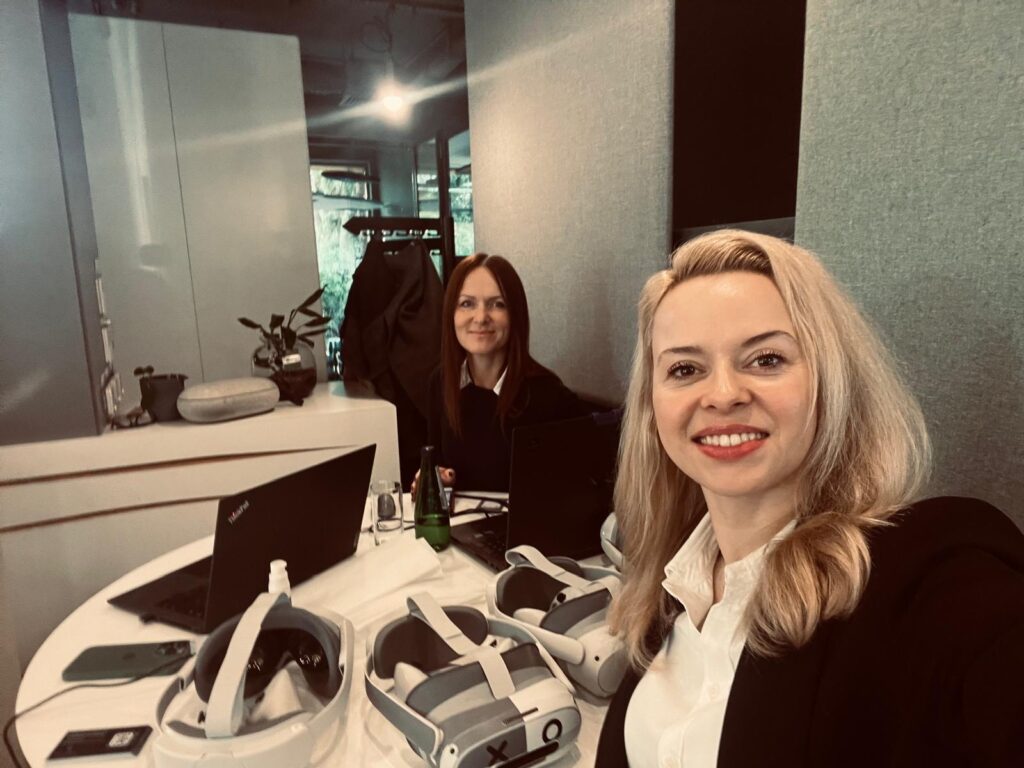The Role of Extended Reality in Journalism and Storytelling
Table of Contents:
In recent times, Extended Reality (XR) technologies, including augmented reality (AR) and virtual reality (VR), have emerged as transformative tools in the world of journalism and storytelling. These technologies have also the power to reshape how we experience immersive journalism and narratives, providing readers with a visceral understanding of news events and stories by placing them directly within the narrative. Want to learn more about XR in journalism and storytelling? Read on!
Exploring journalism with extended reality
The field of journalism is continually evolving, with XR technology at the forefront, driving the shift towards immersive storytelling that seeks to engage readers directly in news events and narratives.
XR empowers journalists to craft interactive settings that draw readers deep into the core of a story. A notable instance is The Guardian’s “6×9: A Virtual Experience of Solitary Confinement”. This immersive encounter enables users to inhabit the tight confines of a 6×9-foot cell, fostering a sense of empathy for the difficulties faced by those in such conditions.
Unlock the future with Mazer: Your innovation partner.
XR’s transformation of storytelling
Extended Reality (XR) technologies have brought about a profound transformation in the realm of storytelling, enabling people to actively participate in stories set within captivating and interactive worlds.
Through XR, narratives take on an interactive nature, allowing readers to submerge themselves within the storyline. They can engage with characters, objects, and settings, creating an unparalleled sense of presence that enriches the storytelling experience. XR empowers creators to fashion fresh, limitless universes that transcend the limitations of the physical world.
Traditional storytelling has often followed linear narratives, but XR encourages non-linear storytelling. This grants readers the liberty to explore narratives in open-ended ways, resulting in personal and unique experiences.
Educational narratives, in particular, flourish within XR environments, enabling learners to delve into subjects through immersive and interactive arenas.
Opportunities and challenges in XR journalism
Extended Reality, encompassing Virtual Reality (VR), Augmented Reality (AR), and Mixed Reality (MR), has brought both prospects and challenges to the arena of news and feature reporting.
In journalism, XR provides the opportunity to create engaging and interactive narratives that resonate with audiences. By harnessing these immersive technologies, journalists can convey stories that may be difficult to tell through traditional mediums. For instance, VR can recreate event environments, such as natural disasters, offering an immersive understanding of the situation. Meanwhile, AR overlays information onto real-world settings, adding depth and context to stories.
However, the integration of XR into journalism isn’t without its challenges. The production costs of XR content can be prohibitively high, and expertise is needed to navigate this technology effectively. Additionally, not all consumers have the necessary hardware, such as headsets, to access XR content. Ethical concerns also arise, including worries about privacy and data capture.
Augmented Reality’s contribution to enhanced journalism
Augmented Reality (AR) seamlessly blends digital content with real-world contexts, resulting in more captivating narratives for audiences.
Numerous AR tools and technologies expand the capabilities of journalists to craft immersive stories. Platforms like Layar, Wikitude, and Junaio enable users to overlay digital information onto physical objects, thereby providing context to stories and deepening comprehension.
Furthermore, augmented reality experiences invite readers to actively engage with stories, incorporating elements like 3D models, 360-degree videos, multimedia content, and interactive quizzes.
AR has also found its way into newsrooms, with technologies like Microsoft’s HoloLens enabling the creation of 3D holographic presentations to enhance the delivery of stories. Even on social media, AR filters add interactive elements to photos and videos, fostering more engaging and enriched forms of audience interaction.
XR storytelling and journalism: the takeaway
Extended Reality (XR) is truly transforming the landscape of journalism and storytelling, providing immersive experiences that both captivate and educate.
In a nutshell, VR serves as a vehicle for transporting viewers directly into narratives, granting them the opportunity to engage with stories interactively. For example, VR can plunge viewers into disaster scenes, delivering an immersive experience that conventional reporting methods can’t replicate. Whether through interactive narratives or augmented realities, XR has unquestionably demonstrated its ability to revolutionize the field of news reporting. Although challenges such as high costs and ethical considerations exist, the incorporation of XR into journalism is paving the path for compelling, interactive, and impactful narratives that are poised to shape the future of storytelling.
How does XR transform storytelling in journalism?
XR empowers journalists to create interactive settings that immerse readers in stories. It allows for non-linear narratives, enabling personal exploration of narratives.
What opportunities and challenges does XR journalism present?
XR journalism offers engaging narratives through immersive technologies like VR and AR. However, challenges include high production costs, expertise requirements, and accessibility concerns.
How does Augmented Reality (AR) enhance journalism?
AR blends digital content with real-world contexts, deepening comprehension. AR tools like Layar, Wikitude, and interactive elements in newsrooms enrich storytelling.
Unlock the future with Mazer: Your innovation partner.

Author: Rafał Siejca
Rafal has over twenty years of corporate experience, including roles at Millennium Bank, Comarch, and leading software teams at PZU, one of Europe’s largest insurance companies. As one of Poland’s few true VR experts with a decade of experience, he ensures timely, high-quality project delivery as CEO and CTO.










